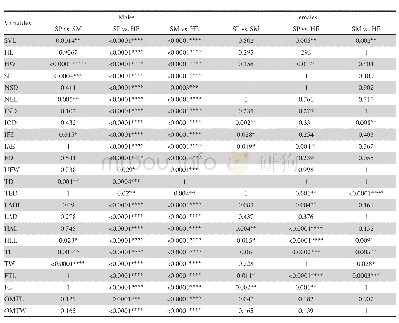《Table 4–Results of ANOVA for different responses.》
 提示:宽带有限、当前游客访问压缩模式
提示:宽带有限、当前游客访问压缩模式
本系列图表出处文件名:随高清版一同展现
《Design and characterization of monolaurin loaded electrospun shellac nanofibers with antimicrobial activity》
A series of 19 experiments based on a 2 4 full factorial design with three replicated center points was performed(Table 3).Pareto charts were presented via a series of ordered bar graphs in order to determine the most significant factors and their interactions.In the presented plot,there were two different t limits including the Bonferroni-corrected t and the standard t.The factor effects might become certainly significant as presented above the Bonferroni limit.The effects were possibly significant as displayed above the t value limit while the influences seemed to be not significant as shown below the t value limit[27].As demonstrated in Fig.5A and Fig.6,Pareto charts and the diameter distributions of nanofibers at different concentrations of SHL and ML revealed that the SHL content(X 1)had a tremendous effect on the diameter of fibers while the ML level(X 2)was the minor factor.For examples,electrospun fibers prepared from 40%w/w SHL(Fig.6D,6E)indicated the larger diameter as compared to those prepared from 35%w/w SHL with the same concentration of ML(Fig.6A,6E).Similarly,the electrospun fibers prepared from a higher concentration of ML(Fig.6A,6B)demonstrated the larger fiber size as compared to those prepared from a lower concentration of ML(Fig.6D,6E)although less extent was observed.As mentioned earlier(Table 2),the increased concentration of SHL resulted in the significant increase of viscosity and the slight decrease of conductivity leading to a reduction in the stretching capacity of the solution.As a result,nanofibers with large diameters might be obtained[20].Another factor affecting the fiber diameter was the concentration of ML.Based on theoretical expectation,an increase in the viscosity of electrospun solution contributes to an increase in the resultant fiber diameter due to a decrease in the stretching capacity during the electrospinning process[20].By contrast,the fabricated nanofibers appeared to be thicker with the presence of increased ML,although the reduced viscosity was clearly indicated.In this case,the influence of viscosity as well as the stretching capacity might be presumably dominated by another factor.As explained in the section 3.1,the possible interaction between SHL and ML was observed.We therefore assumed that the interaction of ML seemed to be the likely cause of the reduced stretching ability of solutions and thus increasing the fiber diameter.ML might interact with the SHL by intercalating among the polymeric chains and thus impeding the elongation or stretching capacity(as postulated in Fig.7).Additionally,the slight decrease of solution conductivity as increasing ML contents also reduced the charge density of electrospun solutions leading to the impaired elastic force within the jet[20].Nevertheless,the impacts of applied voltage and feed rate on the fiber morphology tended to be not important as apparently displayed below the t value limit(Fig.5).
| 图表编号 | XD00598200 严禁用于非法目的 |
|---|---|
| 绘制时间 | 2018.09.01 |
| 作者 | Nawindac Chinatangkul、Chutima Limmatvapirat、Jurairatb Nunthanid、Manee Luangtana-Anan、Pornsak Sriamornsak、Sontaya Limmatvapirat |
| 绘制单位 | Faculty of Pharmacy, Siam University、Department of Pharmaceutical Technology, Faculty of Pharmacy, Silpakorn University、Pharmaceutical Biopolymer Group (PBi G), Faculty of Pharmacy, Silpakorn University、Pharmaceutical Biopolymer Group (PBi G), Faculty of |
| 更多格式 | 高清、无水印(增值服务) |
查看“Table 4–Results of ANOVA for different responses.”的人还看了
-

- Table 2 Results of one-way ANOVA with corrected P values for differences in morphometric variables among O.schmackeri,O.
-

- 表2 接种和干旱处理对土沉香叶绿素含量双因素方差分析结果Table 2 The results of two-way ANOVA for effects of mycorrhizal inoculation and drought stre





